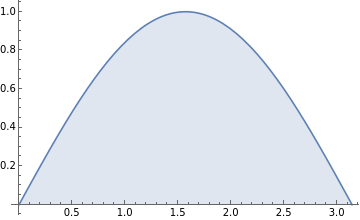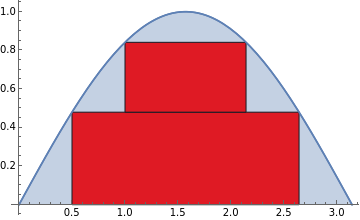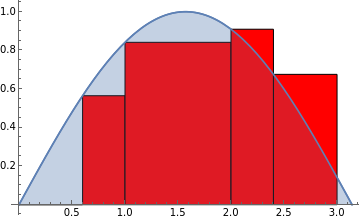
You are using a browser not supported by the Wolfram Cloud
Supported browsers include recent versions of Chrome, Edge, Firefox and Safari.
I understand and wish to continue anyway »
Insert | Sample |
 |
Actual area: 2. |
 |
Rectangle area 1.44004 |
Actual area 2. |
Error 0.559957 |
 |
Rectangle area 1.83632 |
Actual area 2. |
Error 0.163675 |

You are using a browser not supported by the Wolfram Cloud
Supported browsers include recent versions of Chrome, Edge, Firefox and Safari.
I understand and wish to continue anyway »